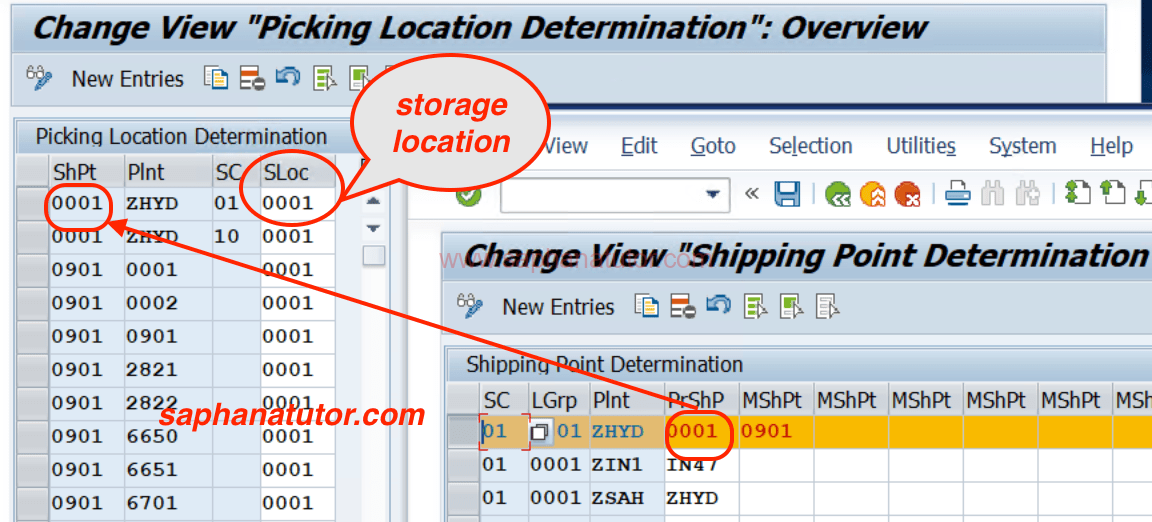What is Picking/Storage Location Determination in SAP?
Picking/Storage Location Determination in SAP is a process that automatically identifies the most suitable storage location for materials within a warehouse. It’s a part of the broader warehouse management and logistics functionality in SAP. The determination typically involves three key elements, they are:
-
- Shipping Point: The physical location from where goods are shipped.
- Plant: The facility where goods are produced or stored.
- Storage Conditions: Specific requirements for storing materials, defined in the Material Master.
Why Picking/Storage Location Determination is Important?
- Optimised Inventory Management: Streamlines inventory organization and management, ensuring efficient storage and retrieval of items from the most suitable locations.
- Accuracy in Fulfilment: Enhances order fulfilment speed and accuracy, reducing errors in picking goods and improving customer satisfaction.
- Streamlined Warehouse Operations: Automates storage location determination, leading to more organised and error-resistant warehouse processes.
How Picking/Storage Location Determination in SAP Works?

-
- In this process, the Shipping Point is often entered manually. The Shipping Point represents the physical location from where goods are dispatched, and its manual entry allows for greater control and specificity in the determination process.
- Manual Entry of Plant:
- Similarly, the Plant is also entered manually. In SAP, a Plant can refer to a manufacturing site or a warehouse, and it plays a crucial role in logistics and distribution processes.
- Storage Conditions from Material Master:
The Storage Conditions are defined in the Material Master under Plant Data Storage 1. These conditions are essential as they specify the requirements for storing the material, influencing the choice of the storage location.
Picking/Storage Location Determination Process
For instance, if the Shipping Point is 0001, the Plant is ZHYD, and the Storage Conditions are set for Plant 01, the resulting Picking/Storage Location would be 0001. Similarly, if the same Shipping Point and Plant are used but with Plant P2, the Picking/Storage Location would still be FN01. These examples illustrate how different combinations of Shipping Point, Plant, and Storage Conditions can lead to the determination of specific storage locations within the SAP system.
Understanding and effectively using T-Code OVL3 for Picking/Storage Location Determination is crucial for SAP users. It ensures an accurate and efficient process for determining where materials should be picked or stored, which is vital for the smooth operation of warehouse and inventory management.
